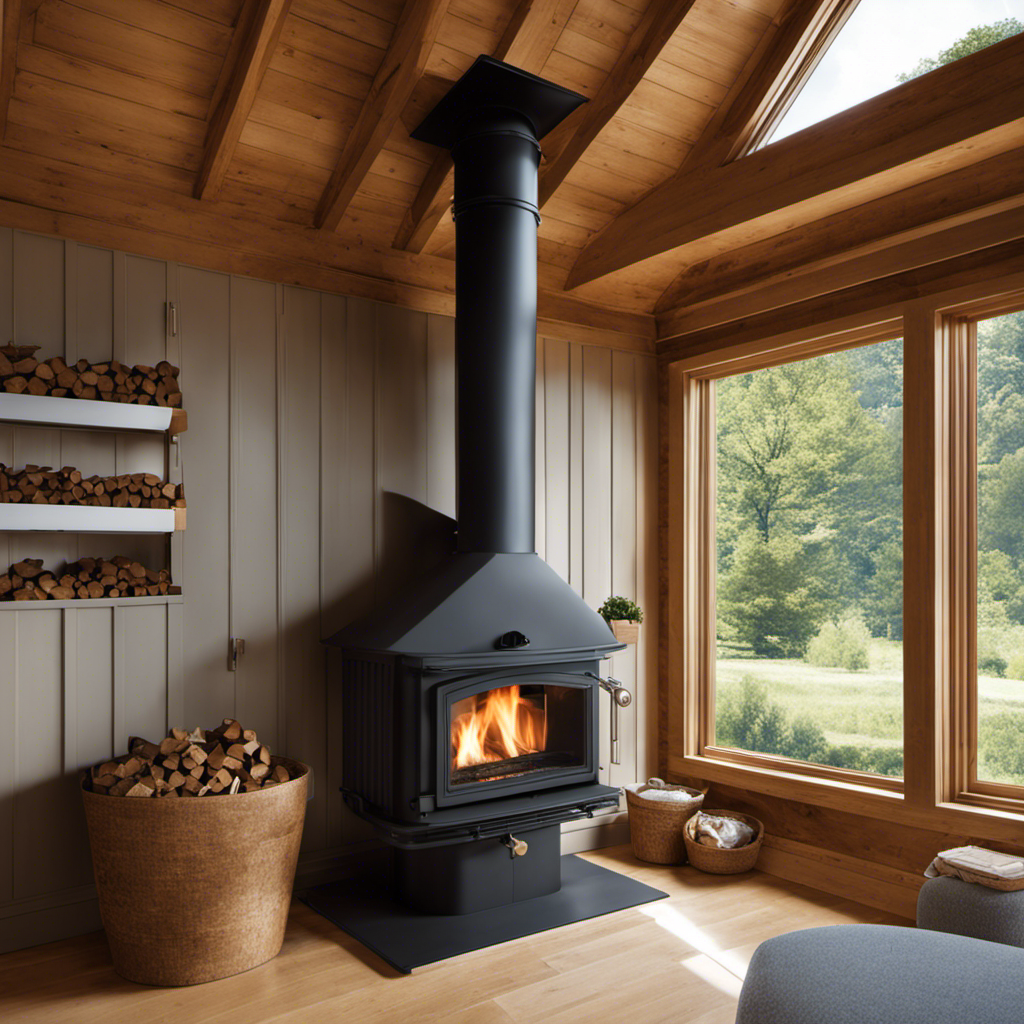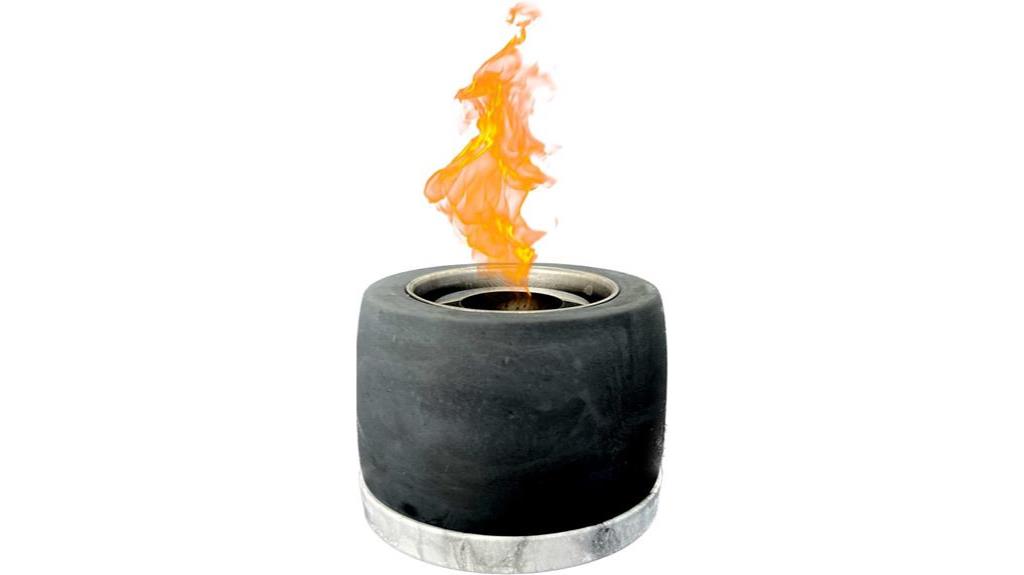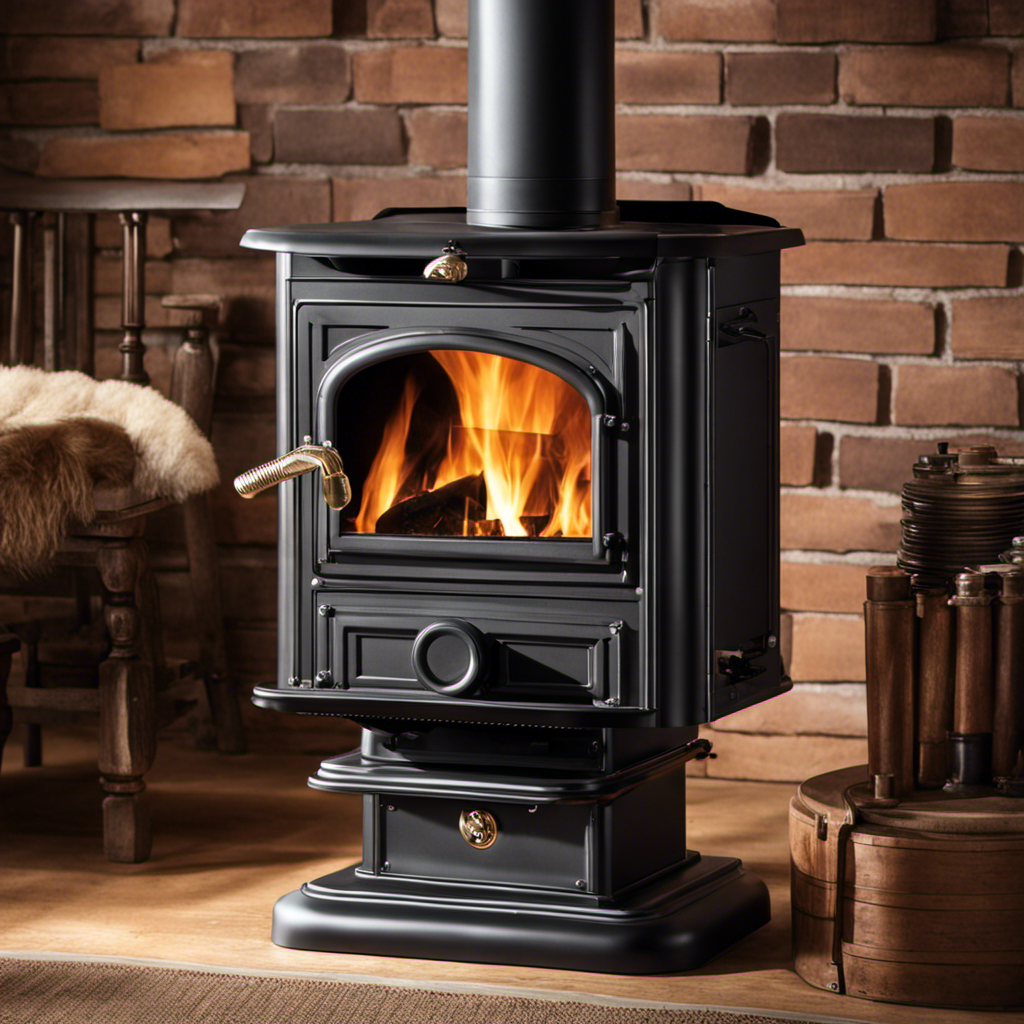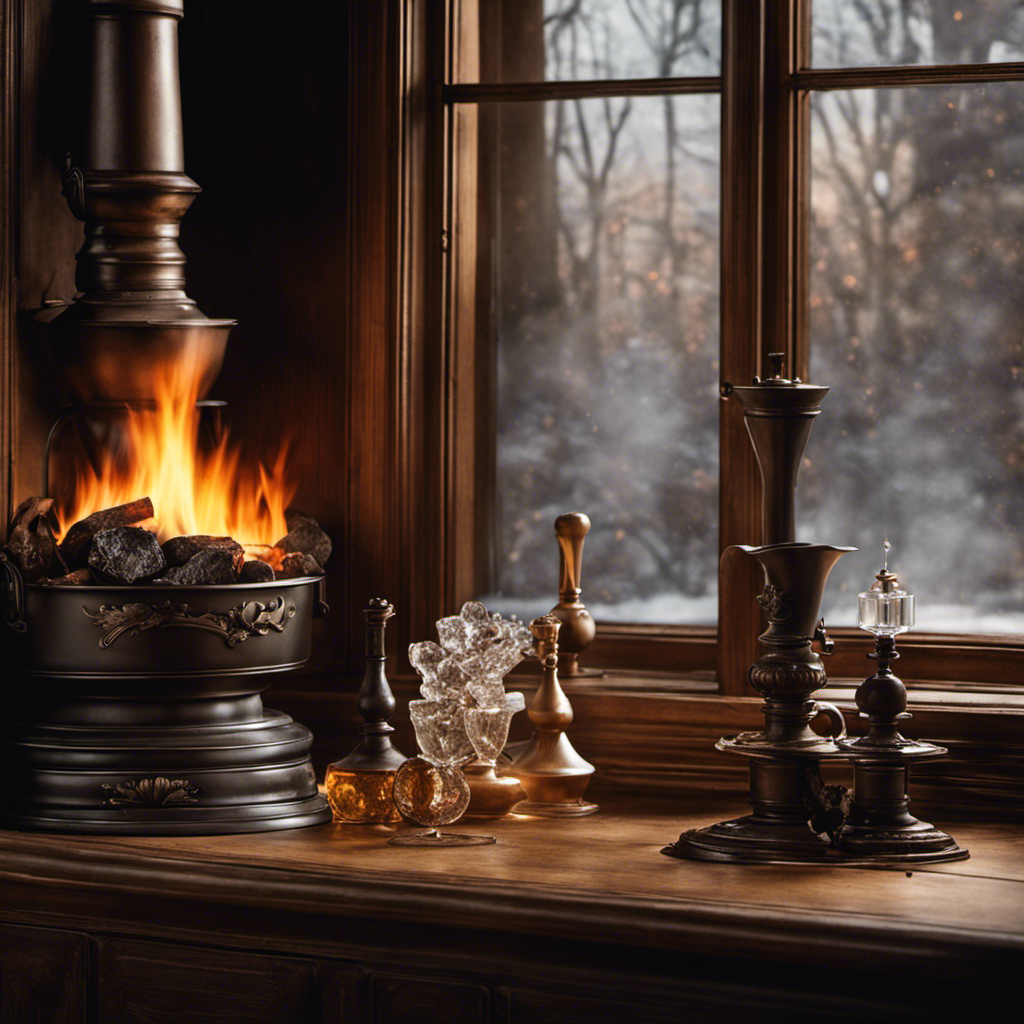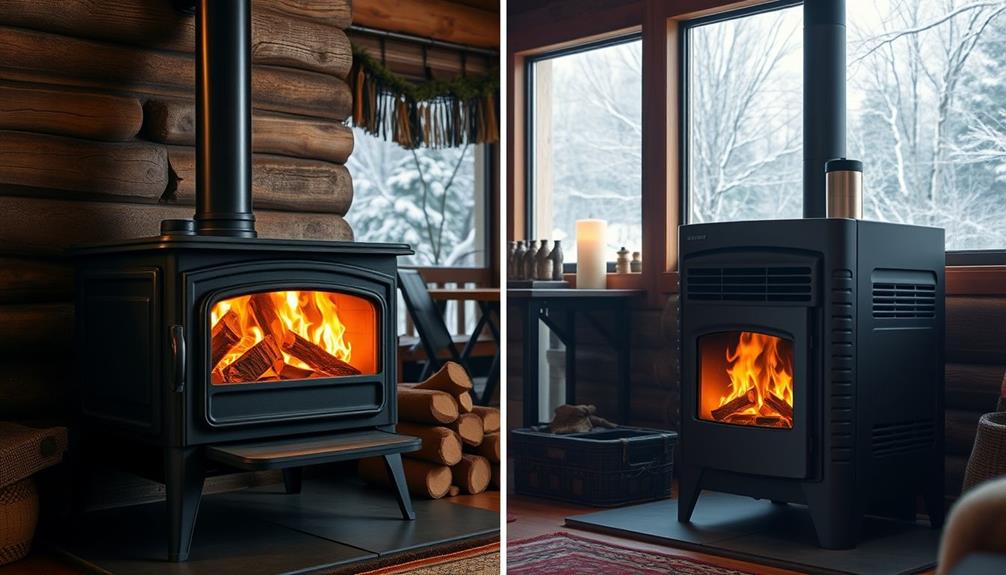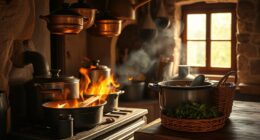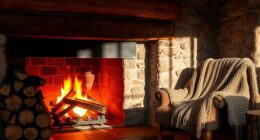You might be wondering – what is the maximum number of elbows allowed in a chimney pipe for a wood stove? Let me explain, there are specific construction standards and regulations in place for this exact purpose.
In this article, I will delve into the factors that determine the number of elbows allowed, explain their impact on wood stove performance, and provide tips for maximizing efficiency.
So, before you start installing those elbows, let’s make sure you’re doing it right.
Key Takeaways
- Building code compliance and safety are crucial when installing chimney pipe elbows on a wood stove.
- Factors such as the type of wood stove, chimney height, and local building codes determine the number of elbows allowed.
- Multiple elbows restrict airflow, leading to inefficient combustion and harmful pollutant release.
- To maximize efficiency, position elbows close to the stove, avoid sharp turns, and choose insulated chimney pipe elbows made of durable materials.
Building Codes and Regulations for Chimney Pipe Elbows
I need to make sure I’m following the building codes and regulations for chimney pipe elbows. Building code compliance is crucial to ensure the safety and functionality of the wood stove chimney system.
When it comes to chimney pipe elbows, there are specific guidelines that must be adhered to. These regulations are in place to prevent potential hazards and ensure proper airflow. Safety considerations are paramount, as incorrect installation or excessive elbows can lead to restricted air movement, increased creosote buildup, and potential chimney fires.
The number of elbows allowed in a wood stove chimney pipe is typically dictated by the building codes. It’s essential to consult the local building code requirements and manufacturer’s instructions to determine the maximum number of elbows allowed for your specific installation.
Factors That Determine the Number of Elbows Allowed on a Wood Stove Chimney Pipe
There are several factors that can determine the number of elbows allowed on a wood stove chimney pipe, such as the type of wood stove, the height of the chimney, and the local building codes. When it comes to wood stove chimney pipe installations, understanding these factors is crucial for ensuring safety and efficiency.
Here are two key considerations:
-
Building Materials:
-
Stainless steel: This material is highly durable and resistant to corrosion, making it a popular choice for wood stove chimney pipes.
-
Galvanized steel: Although less expensive, galvanized steel can corrode over time, requiring frequent maintenance and replacement.
-
Maintenance Requirements:
-
Regular cleaning: Wood stove chimneys accumulate creosote and soot, which can lead to blockage and increased fire risk. Regular cleaning is essential to maintain optimal airflow.
-
Inspections: Periodic inspections are necessary to identify any issues, such as leaks or damaged components, and address them promptly.
Understanding the Impact of Elbows on Wood Stove Performance
Installing multiple elbows in a wood stove chimney pipe can significantly reduce its performance by restricting airflow and causing inefficient combustion. The placement of these elbows directly impacts the draft, which plays a crucial role in the proper functioning of the wood stove.
When elbows are installed, the airflow experiences resistance as it navigates through the bends, resulting in a decrease in draft. This reduction in draft can lead to poor combustion, incomplete burning of fuel, and the release of harmful pollutants into the environment.
It’s essential to minimize the number of elbows in the chimney pipe to maintain optimal airflow and ensure efficient combustion. By carefully considering elbow placement and reducing their number, we can maximize the performance of the wood stove and minimize its impact on the environment.
Tips for Maximizing Efficiency With Elbows in Your Chimney Pipe Setup
To maximize efficiency with elbows in your chimney pipe setup, it’s important to carefully consider the placement and reduce the number of bends. Proper maintenance for wood stove chimney pipes is crucial to ensure optimal performance and safety.
Here are some tips to help you achieve the best results:
-
Placement considerations:
-
Position elbows as close to the stove as possible to minimize heat loss.
-
Avoid sharp turns or abrupt changes in direction, as this can disrupt airflow and cause backdrafts.
-
Choosing the right materials:
-
Opt for insulated chimney pipe elbows to prevent heat loss and condensation buildup.
-
Select elbows made from durable materials like stainless steel or galvanized steel for long-lasting performance.
Common Mistakes to Avoid When Installing Elbows on a Wood Stove Chimney Pipe
I’ve learned that one of the common mistakes to avoid when installing elbows on a wood stove chimney pipe isn’t properly aligning the elbows to ensure smooth airflow.
The importance of proper maintenance for wood stove chimney pipes can’t be overstated. Neglecting the maintenance can lead to a variety of issues, including poor ventilation, reduced efficiency, and even potential hazards such as chimney fires.
One of the common misconceptions about chimney pipe installation is that you can have as many elbows as you want. However, this isn’t the case. Each elbow creates resistance to the airflow, and too many elbows can disrupt the smooth passage of smoke and gases, leading to inefficiency and increased risk.
It’s crucial to follow the manufacturer’s guidelines and limit the number of elbows to maintain optimal performance and safety.
Conclusion
In conclusion, when it comes to the number of elbows allowed on a wood stove chimney pipe, building codes and regulations play a crucial role.
Understanding the impact of elbows on wood stove performance is key to maximizing efficiency.
By avoiding common mistakes and following proper installation techniques, you can ensure the smooth operation of your chimney pipe setup.
Remember, adherence to regulations and attention to detail are essential for a safe and efficient wood stove experience.

